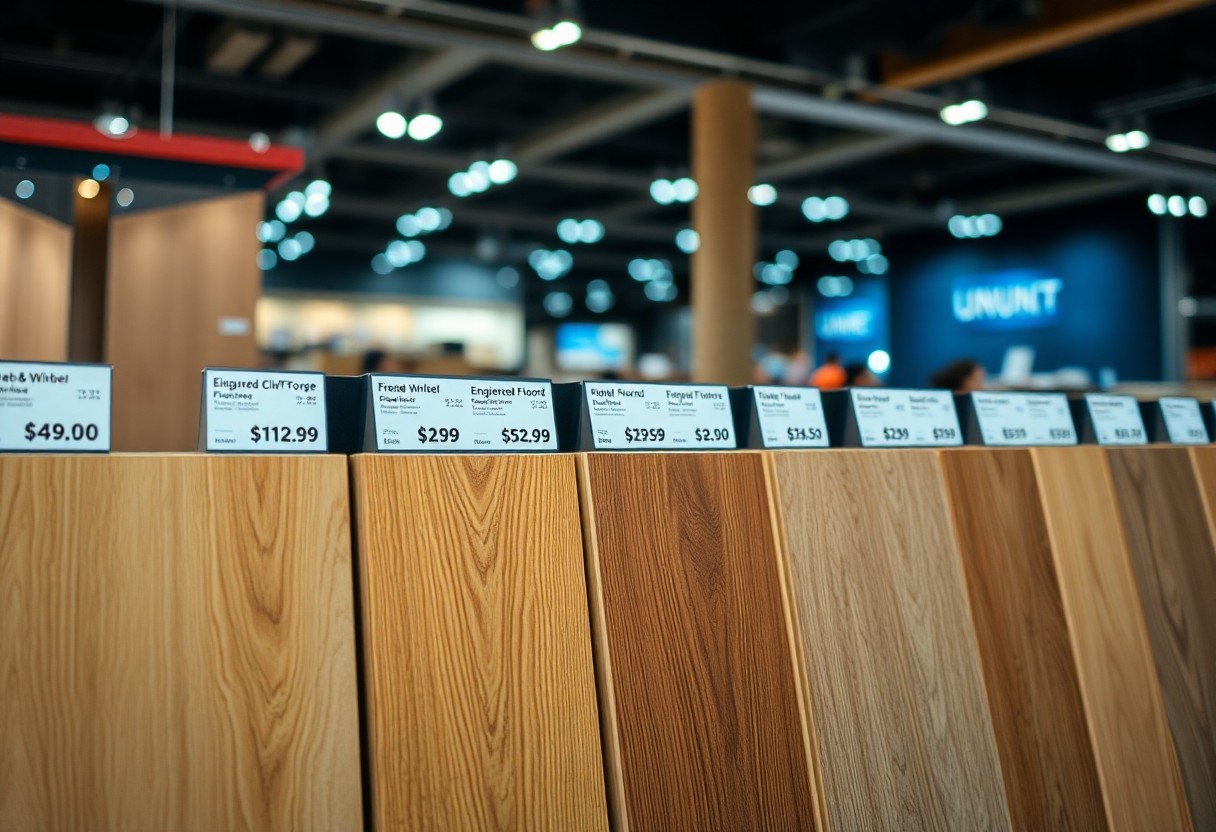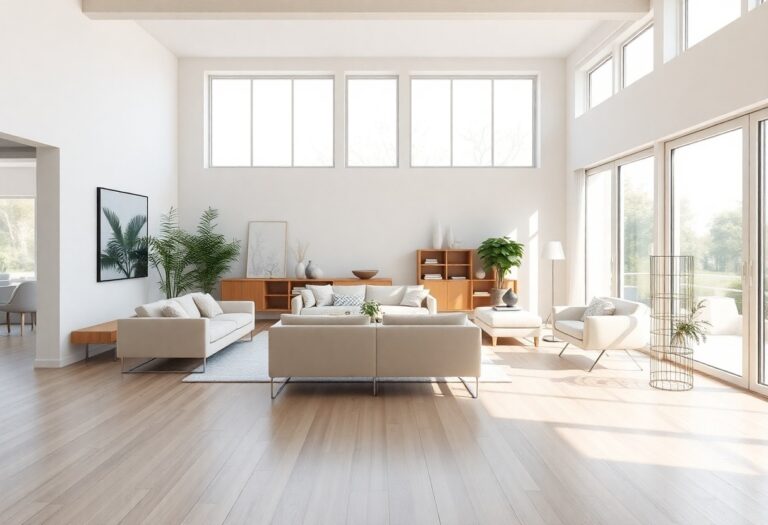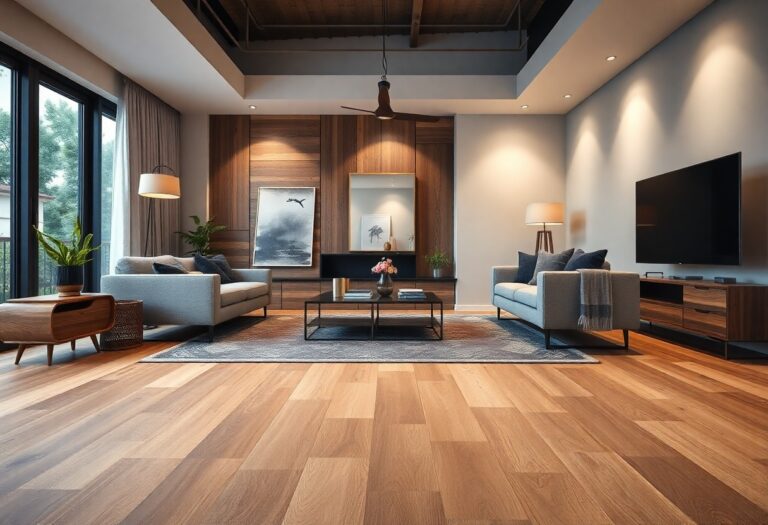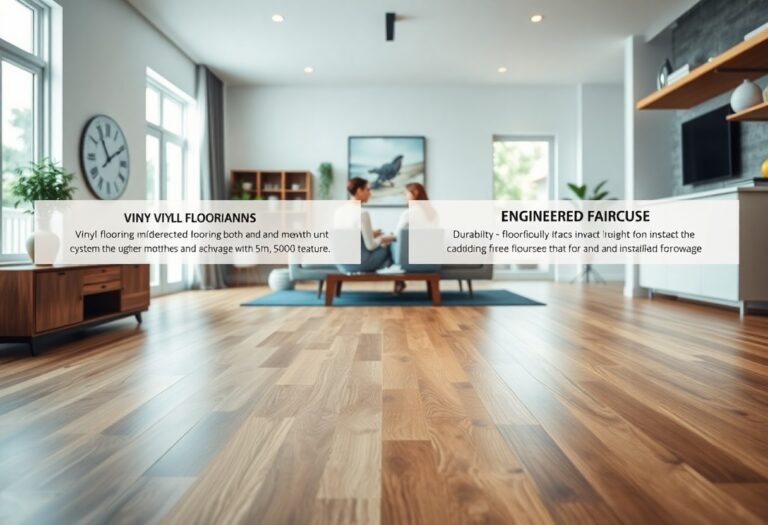Most homeowners find themselves navigating the complexities of flooring options when considering home improvement projects. In this comprehensive guide, you will discover a detailed analysis of engineered timber flooring costs and the long-term value it can add to your property. By understanding the various factors influencing pricing and the benefits of this flooring type, you can make an informed decision that aligns with your budget and aesthetic preferences.
The Real Cost of Engineered Timber Flooring
Understanding the true cost of engineered timber flooring goes beyond the purchase price. Factors such as quality, brand reputation, and location significantly influence overall expenses. It’s crucial to evaluate both the upfront and long-term costs, including maintenance and potential refinishing, when assessing this investment for your home.
Analyzing Material Costs: What You’re Actually Paying For
Material costs for engineered timber flooring can vary widely, depending on the type of wood used, the thickness of the veneer, and the quality of the core layers. High-quality products might run between $3 to $15 per square foot, but choosing cheaper alternatives might save you initially, only to incur higher maintenance costs down the line.
Installation Expenses: Beyond the Price Tag
Installation expenses can significantly impact your overall budget, often ranging from $1 to $5 per square foot, depending on the complexity of the job and regional labor rates. Additionally, costs may increase with the need for subfloor preparation or specific installation techniques, which are crucial for ensuring longevity and performance.
Beyond the basic rate, consider that the installation of engineered timber flooring might require various preparations, such as leveling the subfloor or implementing moisture barriers. These additional tasks can add to your labor costs, potentially pushing the total installation expense significantly higher. Researching local contractors and getting detailed quotes will help you budget accurately while ensuring quality workmanship that supports the flooring’s durability.

The Value Proposition: Engineered Timber vs. Alternatives
Engineered timber flooring presents a compelling value proposition when compared to traditional hardwood and laminate options. Its construction consists of real wood veneers bonded to a durable core, offering both authenticity and affordability. Engineered timber is often more resistant to moisture and temperature fluctuations than solid hardwood, which can expand and contract. This durability means fewer maintenance costs and a longer lifespan, making it a smart investment in enhancing your home’s value.
Longevity and Durability: Counting the Years
Engineered timber floors can last 20 to 30 years or more with proper care. The multi-layered construction enhances stability, reducing the risk of warping and damage, making this a worthwhile option for high-traffic areas. While solid hardwood typically lasts longer, the resilience of engineered timber ensures it remains a reliable choice that withstands the test of time.
Aesthetic Appeal: The Role of Design in Value
The visual appeal of engineered timber flooring plays a significant role in its overall value. Available in a wide range of colors, grains, and finishes, it allows you to customize your space to match your design vision and increase your home’s desirability.
Consider the impact of engineered timber on your interior aesthetics: with options that mimic the look of high-end hardwood at a fraction of the cost, you can achieve a luxurious ambience without overspending. The ability to sand and refinish the surface can also rejuvenate its appearance over the years, adapting to changing styles while preserving its initial charm. This versatility ultimately enhances your property’s market value by attracting buyers who appreciate both beauty and practical functionality.
Factors Influencing Market Price Fluctuations
Various elements play a significant role in determining the market price of engineered timber flooring. Key factors include the availability of raw materials, manufacturing costs, and global economic trends. Additionally, consumer demand and regional preferences can drive price variations.
- Supply and demand dynamics
- Raw materials sourcing
- Manufacturing processes
- Global economic conditions
- Import/export tariff changes
Any fluctuations in these areas can lead to significant changes in pricing for engineered timber flooring.
Supply Chain Dynamics: How Global Events Impact Costs
Global events like natural disasters, trade disputes, or pandemics can disrupt supply chains, affecting the availability and cost of engineered timber. For instance, shipping delays and material shortages can significantly hike prices. You might notice that changes in the timber supply chain can ripple through to the market, making it important to stay informed about current global events and their implications for flooring costs.
Seasonal Trends: Timing Your Purchase for Best Value
Certain times of the year typically offer better pricing on engineered timber flooring due to lower demand or sales promotions. Shopping during off-peak seasons, such as late winter or early spring, can result in substantial savings as retailers often seek to clear inventory. Be aware of key holiday sales events, which might also present opportunities for deals.
For example, purchasing during the winter months can yield savings as fewer homeowners are focused on renovation projects then. Conversely, demand spikes in spring and summer months lead to higher prices. Keeping an eye on retailer sales cycles can allow you to secure discounts, ensuring you get the most value for your investment. Additionally, planning your purchase around significant sales events can enhance your budget and project timeline efficiency.
Maximizing Your Investment: Enhancing Resale Value
Investing in engineered timber flooring not only elevates your home’s aesthetic but significantly enhances its resale value. To ensure you reap the rewards, focus on selecting styles and finishes that resonate with potential buyers and reflect current design trends. A well-maintained floor can be one of the standout features during viewings, setting your property apart in a competitive market.
Strategic Upgrades: Features That Attract Buyers
Incorporating features such as wider planks, rich color tones, and eco-friendly finishes can make your property more attractive to buyers. Additionally, adding a seamless transition from engineered timber to other flooring types or using complementary trim can create a cohesive look that enhances appeal. Investing in timeless designs while considering local preferences will likely yield a better return on investment.
Maintenance and Care: Ensuring Long-Term Value Preservation
Regular maintenance of engineered timber flooring is necessary for long-term value preservation. Adopting a routine that includes sweeping or vacuuming to eliminate dirt and debris, using appropriate cleaning products, and addressing minor scratches promptly will keep your floors looking pristine. Investing in protective pads under furniture and controlling humidity levels can further extend the life of your flooring.
Commit to performing regular maintenance checks every few months to inspect for signs of wear, and always use products that are compatible with your flooring type to avoid damage. Consider professional cleaning every couple of years to refresh the finish and restore shine. Awareness of environmental factors such as humidity and temperature fluctuations can help you maintain optimal conditions that prevent warping or gapping, ensuring your floors remain a significant asset to your property’s value.
Navigating Warranties and Guarantees: What to Know Before You Buy
Understanding warranties and guarantees is vital for protecting your investment in engineered timber flooring. Different manufacturers offer varying coverage lengths and conditions, which can impact your purchase decision. Look for clear details regarding the type of warranty—structural, finish, or wear—and ensure you grasp the terms thoroughly before finalizing your purchase to safeguard against potential defects.
Understanding Industry Standards: What Covers Your Investment?
Industry standards dictate the minimum expectations for warranties on engineered timber flooring. Typically, warranties cover defects in material and workmanship for a duration ranging from 10 to 30 years. You should check if the warranty includes aspects like fading, staining, and moisture damage, as these significant factors can impact the longevity and aesthetics of your flooring.
Common Pitfalls: Avoiding Warranty Misconceptions
In navigating warranties, misconceptions often lead to frustration and financial loss. Many consumers assume that all damages are covered under warranty, but exclusions can vary widely. Factors like improper installation, excessive moisture, and lack of maintenance might void your warranty. Understanding these details can help you maintain compliance and protect your investment.
Researching warranty specifics is vital for avoiding pitfalls. Often, consumers assume their flooring is fully protected, but neglecting to follow manufacturer guidelines can lead to denied claims. For instance, using an unapproved cleaning product or failing to keep humidity levels in check might void coverage. Familiarize yourself with the warranty’s fine print, manufacturer recommendations, and installation requirements to ensure your flooring stays protected.
Conclusion
From above, you can see that understanding engineered timber flooring costs and value is vital for making an informed decision. By evaluating factors such as materials, installation, and long-term benefits, you can determine the best options for your home. Investing in quality engineered timber flooring not only enhances the aesthetic appeal of your space but also contributes to its overall value. Ensure you weigh your choices carefully to achieve the perfect balance between cost and quality that suits your needs.





